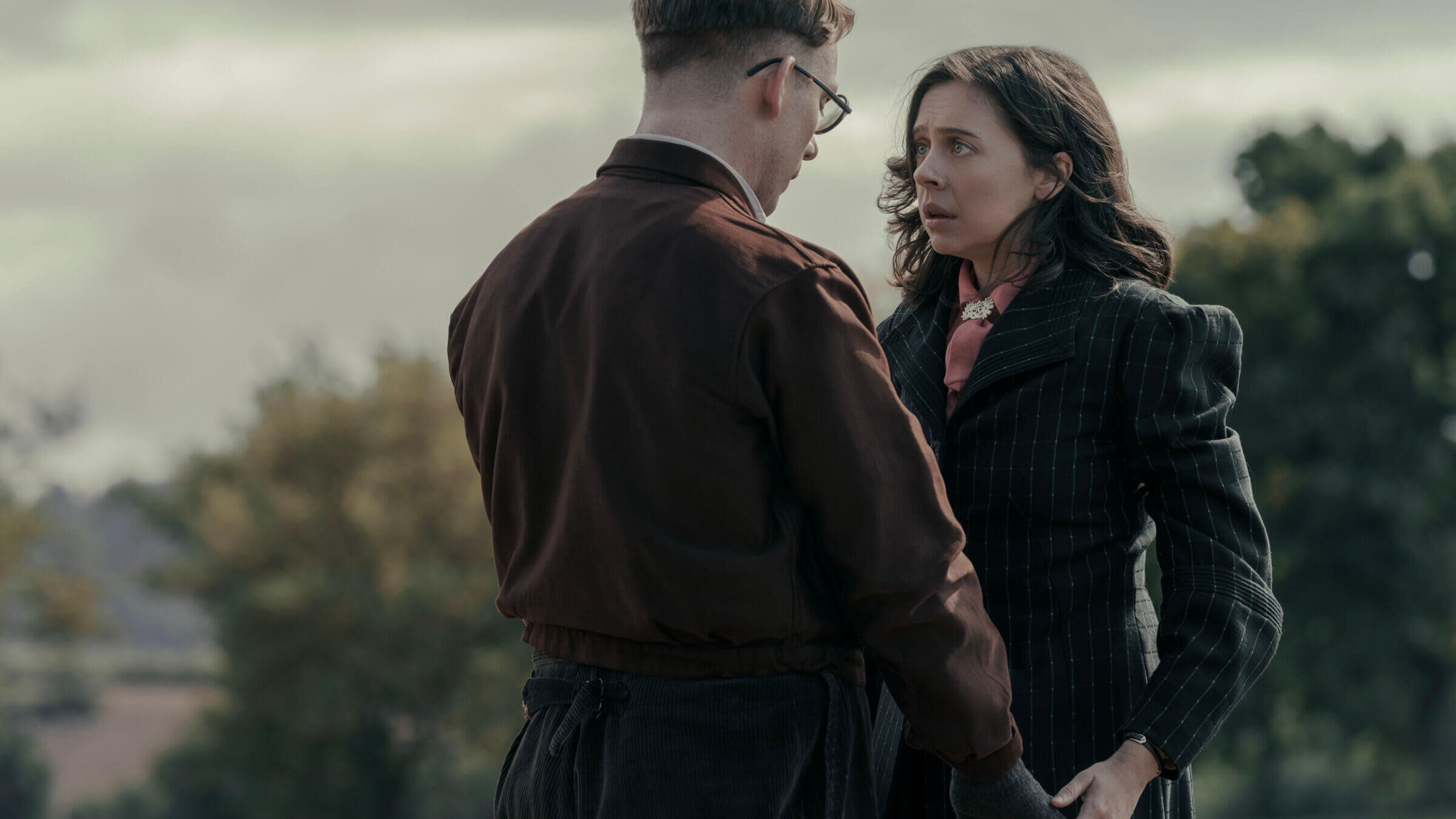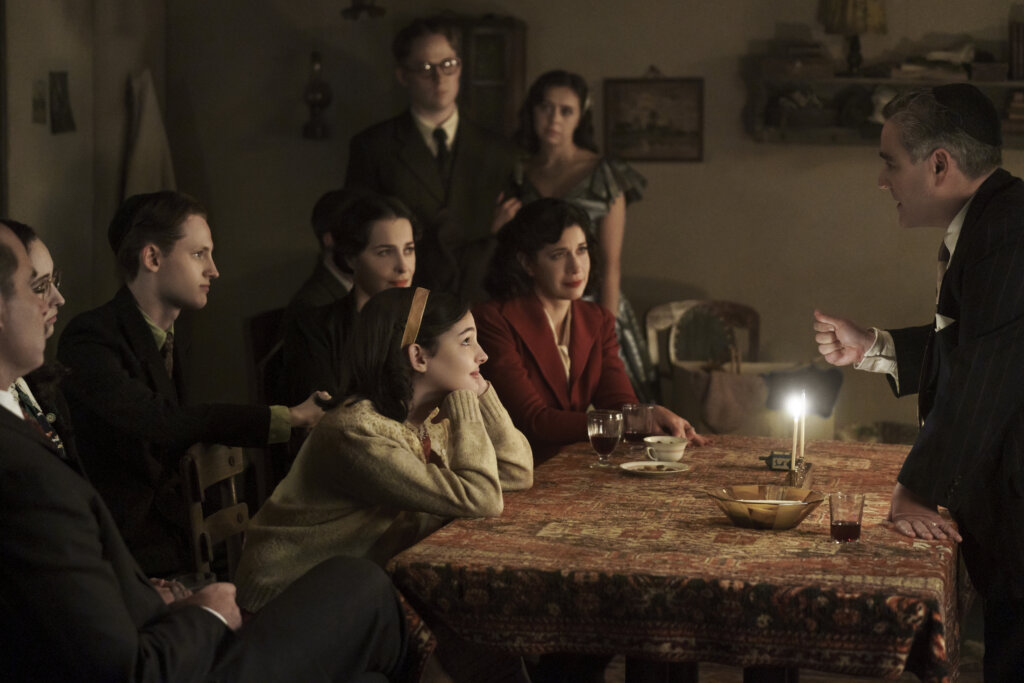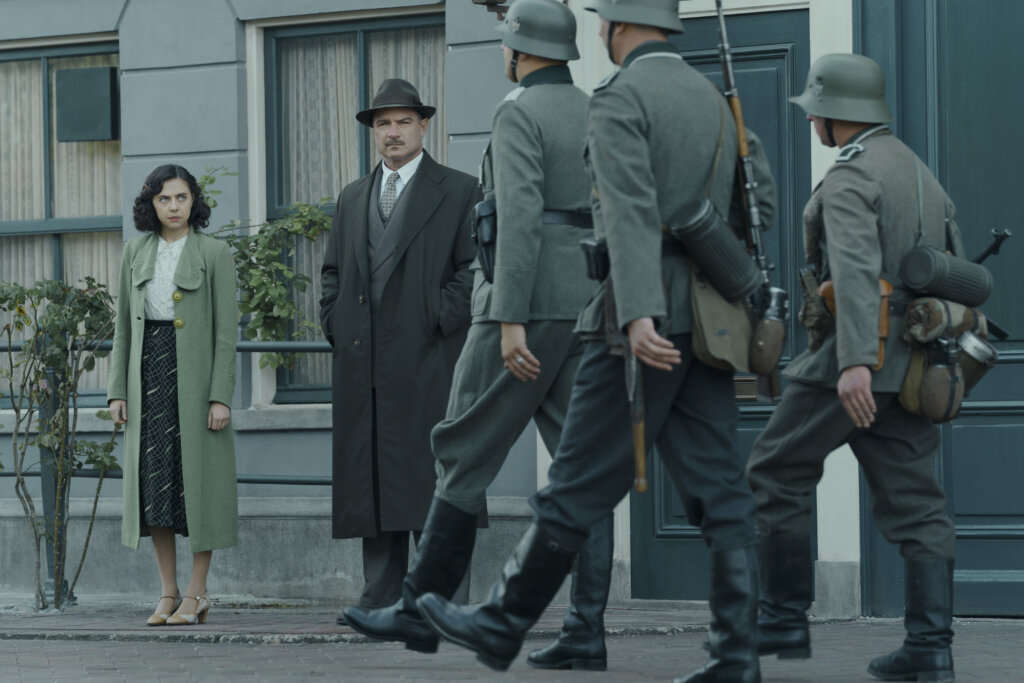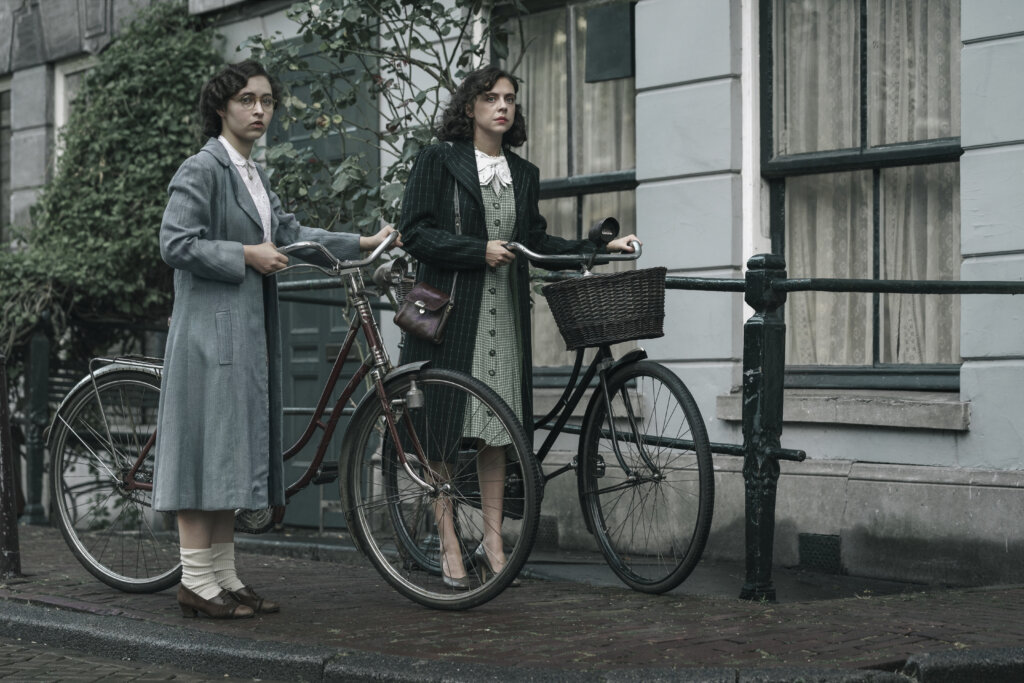A new Miep Gies show hails Anne Frank’s protector — but ignores the collaborators
Though the Gieses risked their life to save Jews, ‘A Small Light’ looks away from the many citizens who did nothing

Jan, played by Joe Cole, and Miep, played by Bel Powley, embrace. Courtesy of National Geographic for Disney
Anne Frank’s diary is famous for documenting life in hiding during the Holocaust. Since being published, the book has made millions of people familiar with the trials of the Secret Annex where the young girl documented the food shortages, close quarters and constant fear — along with her familial spats, dreams of becoming a famous writer and hopes for the war’s end.
A Small Light, a new show from National Geographic, turns the camera around to what was going on around Anne, outside the Secret Annex. Following Miep Gies, perhaps the best known of the six people who helped to hide the Franks, it shows the work of the Dutch Resistance as well as what non-Jews were going through in Amsterdam under the Nazi occupation.
But highlighting non-Jews in the Holocaust is a delicate matter, and A Small Light is coming out at a time in which Holocaust revisionism is on the rise. Hate groups have long denied or distorted the Holocaust, but now entire governments, such as Poland’s, have begun to emphasize the deaths of non-Jewish Polish citizens who died during the war, papering over the many citizens who turned in their neighbors and drawing focus away from the Jewish population that was systematically hunted and exterminated.
Gies’ story, too, is related to a similar controversy. Though the Netherlands has the second-highest number of documented saviors, and is renowned for its citizens’ fierce fight against the Germans, it also had one of the highest Jewish death tolls, losing more than 100,000 out of its 140,000 Jews. Only in 2020 did the Dutch government apologize for its collaboration with the Nazis. In 2025, Dutch records of Nazi collaborators will become publicly available, an event which many Dutch expect to be deeply discomfiting as people learn the true activities of their families. Most were not like Miep Gies.
The woman behind the Secret Annex
Opening before the war, Gies, as played by Bel Powley, is a bright-eyed and vibrant woman who loves to go out dancing, but also feels like a misfit. On the surface, her story is not entirely dissimilar from that of the Jews: As a child, she was sick from malnutrition thanks to the food scarcity in Austria after World War I, and was sent away to an adoptive family in the Netherlands; she never saw her birth family again. After Otto — played by a gruff Liev Schreiber — hires her, she bonds with the Frank family, also transplants from Germany, over their shared language.
After the Frank and Van Pels families, along with dentist Fritz Pfeffer, go into hiding, Miep and her husband Jan go to enormous lengths in order to protect people — not only those in the Annex — from the Nazis. Jan worked with the Resistance, and helped hide Jewish children with adoptive families in the countryside. The two hid another dissident in their small apartment, putting Miep and Jan at even greater risk at a time households were often searched by Nazis.

A Small Light also introduces us to other Dutch resisting the Nazis in Amsterdam. There’s a gay bar that hosts Resistance meetings because homosexuals, too, are illegal under the Nazi regime. Jan’s bosses connect him to those hiding children and help him find extra ration cards so they can get food for the fugitives. Even the potato supplier seems to know that the Gieses are hiding people, bringing extra food and taking care to hide his oversized deliveries from suspicious soldiers. It makes for a gripping watch, full of subterfuge and suspense and people to root for.
Though the series has a disclaimer at the beginning of every episode, explaining that while the story is based on historical events, some details and characters are fictional, most of the story is true. After the Secret Annex was exposed, Miep really did march into a Nazi office to attempt to bribe soldiers into freeing the families, for example, a detail I had to look up to believe because it seemed so foolhardy.
But as brave and impressive as the Gieses’ efforts, and those of the Resistance, were, it is easy to get the impression, when watching A Small Light, that nearly the entire nation of the Netherlands was fighting the Nazis and helping the Jews — after all, nearly everyone we meet during the show is.
The only Nazi supporters in the show are faceless, uniformed officers and Miep’s best friend Tess’s fiancé, who has business dealings with the Nazis and hosts a party full of Nazi supporters. (We still barely meet him, but at least he has a name and a few lines.) The most fleshed out character who isn’t actively helping the Resistance is Tess, who simply loves her fiancé and looks the other way. We never have to grapple with the many people who supported the regime.

Similarly, though the Jews in the show are likable, only Otto Frank is a well-developed character. Perhaps that’s because most people are already so familiar with Anne’s story, but it is hard to feel their pain and fear. (Indeed, life in the Annex, in the show, looks surprisingly normal; the space appears fairly large and the families are often loud and raucous.)
Instead, the suffering and pain the show highlights is that of Jan and Miep. We feel their terror as they smuggle people and food, talk to soldiers, and hide from bombs. We experience their struggle with their choices, and their torture over whether they’re ever, truly, doing enough.
A Small Light is, of course, a story about the Gieses. And without the Jews in question, perhaps we would never have heard of Miep and Jan. Yet somehow, the Jewish characters feel like a footnote.
Holocaust heroes
The bravery and importance of those known as The Righteous Among Nations, non-Jews who worked to save and hide their Jewish friends and neighbors, cannot be underestimated. But it is hard not to notice that many of the most famous pieces of Holocaust media — Schindler’s List, The Boy in the Striped Pajamas, The Book Thief — focus on the heroism of gentiles, and look away from Jews.
The show thankfully avoids the pitfalls of some of these stories such as The Boy in the Striped Pajamas. Holocaust educators have long criticized the book, and subsequent movie, for focusing on Germans instead of Jews and for implying that most Germans had little idea what the Nazi regime was doing. A Small Light, meanwhile, when showing a soldier who spared Miep, is careful to emphasize his antisemitism. And, unlike Anne’s diary or its retellings, it doesn’t end with the Franks’ capture; its final episode goes on to show the aftermath of the war, including a wrenching scene of Otto Frank saying kaddish for Peter Van Pels.

Still, the Jews are not the focus — Gies is. Her appeal is obvious: She is famous from Anne’s diary, yet still relatively unknown. And she makes an inspiring hero; by all accounts, Gies did not hesitate to help the Franks, and took countless risks on their behalf. She is an appealing figure to make Holocaust education feel new and compelling again, when stories like Anne’s are so familiar they can feel almost trite.
But as Dara Horn wrote in a powerful essay in the Atlantic, Holocaust education that focuses on non-Jewish saviors, or “upstanders” as they are often termed, can make it too easy for viewers to assume they, too, would have risked their lives to save Jews when, in fact, most people did nothing or even worked with the Nazis. Most people were not heroes.
“People glom on to this idea of the upstander,” Kim Klett, a Holocaust educator, told Horn. “Kids walk away with the sense that there were a lot of upstanders, and they think, Yes, I can do it too.” But, Horn writes, this does not grapple with the fact that antisemites, and other perpetrators of violence or hatred, felt that they, too, were doing something good and right. This focus on figures like Gies ignores the fact that what makes an “upstander” is not always obvious, nor always inspiring, no matter how much the soundtrack swells.
This is not to make light of the Gieses’ work, nor of how scared and tortured they were through the war, risking their lives daily. But A Small Light will have an enormous reach thanks to its high production value and distribution on Hulu and Disney+, and that audience might easily end up seeing the Holocaust as an inspiring tale. Powley’s Miep is perhaps too likable, and too relatable. It’s too easy to see oneself in her.
Gies herself emphasized, until her death at age 100, that she was ordinary. “I don’t like being called a hero because no one should ever think you have to be special to help others,” she said.
But the fact of the matter is that most ordinary people didn’t do anything. And it’s important not to leave that out of the story.

















